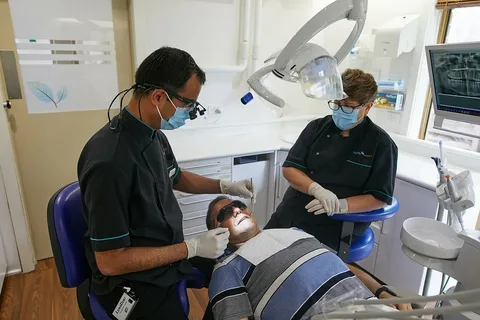The clock ticks. 30 seconds… 1 minute… 2 minutes. Your lungs are starting to burn, and every fiber of your being is screaming at you to breathe.
Most people assume that holding your breath longer is a matter of pure willpower or simply having huge lungs. They take a massive gulp of air, squeeze their mouth shut, and wonder why they fail after a minute.
This article is for you if you’ve ever wanted to add 30 seconds, a minute, or even double your current breath-hold time. We will unlock the three main secrets to breath-holding, which have far less to do with lung size and everything to do with chemistry, psychology, and technique.
This journey is called apnea—the conscious suspension of breathing—and is a powerful practice, but it starts with a non-negotiable rule.
STOP! The Golden Rule of Safety
NEVER practice breath-holding alone. Especially not in or near water. You must always have a trained, attentive buddy present.
NEVER hyperventilate excessively. This means don’t take 20 rapid, deep breaths before a hold. Over-breathing flushes too much carbon dioxide (CO₂) out of your body, which can dangerously mask the body’s natural “alarm clock.” This can lead to a Shallow Water Blackout (SWB) and death. Safety is non-negotiable.
Secret 1: The Alarm Clock, Not the Fuel Gauge
The first and most important secret is understanding why you feel the urge to breathe.
It’s a common misconception that you run out of oxygen (O2). When you start a breath-hold, your blood is already nearly 100% saturated with O2. You have plenty of fuel!
The real problem is carbon dioxide (CO2).
Every cell in your body produces CO2 as a waste product, and as it builds up in your blood, your brain’s sensors—think of them as your CO2 police—start to panic. When the CO2 level hits a certain threshold, the brain sets off the alarm: that terrifying burning sensation and the involuntary twitching of your diaphragm (the muscle under your lungs).
The urge to breathe is an alarm bell triggered by too much CO2, not an emergency siren signaling no O2.
The entire game of breath-holding is not about hoarding oxygen; it’s about increasing your tolerance to CO2 and learning to stay calm while the CO2 alarm is ringing.
The Inner Dolphin: Your Mammalian Dive Reflex
When you submerge your face in cold water, your body has an ancient, automatic survival switch called the Mammalian Dive Reflex (MDR). It’s like an inner dolphin or seal power mode!
The MDR instantly kicks in to help conserve your precious O2:
- Your heart rate slows down (Bradycardia): Less pumping means less oxygen consumption.
- Blood shifts (Vasoconstriction): Blood flow is restricted from your arms and legs and shunted toward your most vital organs: your heart and brain.
You can feel a version of this reflex even on land. Simply splash cold water on your face right before a hold—especially the area around your nose and eyes—and you’ll notice a natural calming effect that helps slow down your body’s oxygen burn.
Secret 2: Mental Mastery – The O2 Thief
Fear, anxiety, and movement are massive O2 thieves.
When you panic, your heart races, your muscles tense up, and your body burns through its O2 reserves at an astonishing speed. The second secret to a longer breath-hold is achieving a profound state of mental calm.
The Art of Doing Nothing
The best breath-holders look bored. They are not fighting the urge; they are simply observing it.
- Relaxation Scan: Before you start the hold, mentally scan your body from your toes to your forehead. Is your jaw clenched? Are your shoulders tense? Is your stomach tight? Every bit of tension is wasting energy and oxygen. Let it all go.
- The CO2 Wave: Don’t resist the urge to breathe, because fighting it wastes energy. Instead, visualize the CO2 buildup like a gentle wave or a slow-rising tide. Acknowledge the feeling and tell yourself: “This is just the alarm, not an emergency.”
- Mental Distraction: For the first part of the hold, keep your mind occupied with a repetitive, non-stressful task. Count backward slowly from 100, or try to recite the lyrics of your favourite song. This simple trick bypasses the primal panic center in your brain for a crucial amount of time.
Secret 3: Training Your Alarm Clock
You can change your body’s CO2 alarm setting. The more you expose your body to elevated CO2 levels in a controlled, safe way, the more your body adapts, allowing you to tolerate that burning sensation for longer before the alarm goes off.
The key training tool for beginners is the CO2 Table.
What is a CO2 Table?
A CO2 table is a set of repeated breath-holds where the hold time stays the same, but the recovery breathing time gets shorter after each hold. This means you have less time to flush the CO2 out of your system, forcing your body to learn to live with higher and higher levels of it.
Remember: Only do this dry, sitting down, and never alone!
| Round | Hold Time | Recovery (Relaxed Breathing) | Goal |
| 1 | 1:00 | 2:00 | Relax, get your heart rate down. |
| 2 | 1:00 | 1:45 | Start to feel the first hints of CO2. |
| 3 | 1:00 | 1:30 | The urge to breathe is now noticeable. |
| 4 | 1:00 | 1:15 | This round should feel challenging. |
| 5 | 1:00 | 1:00 | Push your mental comfort zone. |
| 6 | 1:00 | 0:45 | Stop if you feel dizzy or lightheaded. |
- Note: If your maximum comfortable breath-hold is 2:00, you’d set your hold time to around 1:30 to 1:40 and adjust the table accordingly. Start conservatively.
The Pre-Hold Protocol: Setting Yourself Up for Success
The final minutes before your hold are critical. Do not hyperventilate!
- Relaxed Breathing (2 minutes): Sit or lie comfortably. Breathe slowly and calmly—no faster or deeper than normal. Focus on making your exhales slow and complete. This is the calm phase.
- The Cleansing Breath: Take one long, slow, complete exhale. Push all the residual air out. This helps stimulate your diaphragm and signals your body to prepare.
- The Final Breath: Take a slow, smooth, full breath, using your diaphragm (belly) first, then filling your chest. Don’t force or “pack” the air—just take a naturally maximal, comfortable inhalation.
- Hold: Lock the air in by closing the glottis (the back of your throat), like you’re holding a yawn, not by squeezing your cheeks or lips.
Secret 4: The Lifestyle Factors That Hurt You
Your everyday habits have a huge impact on how efficiently your body uses and transports O2.
- Hydration: Being dehydrated thickens your blood, making it harder for O2 to travel efficiently to your cells. Drink plenty of water throughout the day.
- Food and Digestion: Avoid large, heavy meals right before a training session. Digestion is a massive process that draws blood and consumes O2 that you want available for your breath-hold.
- Smoking/Vaping: This is the ultimate enemy. Carbon monoxide from smoke attaches to your red blood cells 200 times more easily than O2, essentially “parking” in the spots where oxygen needs to go. Quitting will give you the most dramatic improvement in breath-holding ability.
- Aerobic Fitness: Good overall cardio fitness (running, swimming, cycling) makes your heart and blood system more efficient at delivering O2 and clearing CO2. A fitter body is a more efficient body.
Final Thoughts: The Journey
Holding your breath longer isn’t about some superhuman trait; it’s about mastering your body’s chemistry and your mind’s reaction to discomfort.
You now have the secrets:
- The Trigger: It’s all about CO2 tolerance, not O2 capacity.
- The Fuel: Mental calm is the key to minimizing O2 consumption.
- The Technique: CO2 Tables are your structured path to improvement.
Start small, listen to your body, and never push past the point of feeling safe. Celebrate every 5 or 10-second gain. With consistent, safe practice, you’ll be amazed at the silent, focused world you can unlock within your own breath.
Have you ever tried a CO2 table? In the comments below, share your experience and your biggest tips for staying calm during the urge to breathe!
CRUCIAL SAFETY WARNING: Never practice breath-holding alone, especially in or near water. You must have a trained, attentive buddy present. Furthermore, never engage in excessive hyperventilation (rapid, deep breathing) before a breath-hold. Hyperventilation deceptively lowers the carbon dioxide (CO2) in your body, allowing you to hold your breath longer, but dangerously masking the body’s natural urge to breathe. This can lead to Sudden Water Blackout (SWB) and death.
.
Gear Up for Your Next Breath-Hold session
When the water is cold and the wind picks up, staying warm after a long swim or dive is just as crucial as the dive. Waterparkas are built for ocean athletes who refuse to cut their adventures short. Safety is non-negotiable.
Read More Gorod








